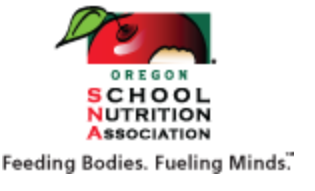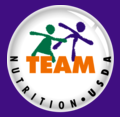Important Dates
- Culinary Workshop Survey due: Thursday, February 24, 2022
- Equipment Grant Application packets due: 1 pm, Thursday, February 17, 2022
- December 2021 Claim due: Tuesday, March 1, 2022
- OSNA Conference: March 11-12, 2022
- USDA Foods Orders due: Wednesday, March 16, 2022

SNP Updates
Summer Meals Text Number
We wanted to make sure you were aware of the number change to the Summer Meals text service. The automated texting service which connects families to local summer meal sites is now 914-342-7744.
The 97779 number that was previously in use is now discontinued. The new number is in operation and will be this summer.
States, sponsors, as well as FNS offices, may start promoting this new text number. Folks can still text “summer meals” or a question that may contain a keyword such as “summer,” “summermeals,” or “verano” (for Spanish), to receive an automated response to resources located near an address and/or zip code. Please relay this information to your sponsors and update any relevant promotional materials. The new text number has been updated on USDA’s public website, and more information about the National Hunger Hotline and associated texting service may be found here.
*Please note, the USDA National Hunger Hotline number has not changed. Individuals can still call 1-866-3-HUNGRY or 1-877-8-HAMBRE to speak with a representative who will find food resources such as meal sites, food banks, and other nearby social services.
School Meals Operations Study (SMO) – A Survey May be Coming Your Way
The Oregon Department of Education Child Nutrition Programs (ODE CNP) would like to make sponsors of the Child Nutrition Programs aware that the U.S. Department of Agriculture (USDA), Food and Nutrition Services (FNS) has partnered with Mathmatica and is conducting a study of school meal operations. Should your school or school district be selected to participate in the study, USDA and or Mathmatica may reach out to you directly via email. Not all program sponsors will be selected.
The study is collecting information from both state agencies and individual sponsors regarding program operations during school year 2020-2021 and 2021-2022 as well as the financial impacts of the COVID-19 pandemic on sponsors.
You may receive an email directly from Mathmatica on behalf of USDA with a link to a survey and detailed instructions; the correspondence will not come from ODE CNP. Cooperation by States and districts is required under Section 28 of the Richard B. Russell National School Lunch Act, so we thank you in advance for your participation in this important study should your school or school district be selected.
|
P-EBT Administrative Funds
The United States Department of Agriculture has awarded the state of Oregon specific funding to assist with the associated administrative costs incurred by sponsors in supporting the Pandemic Electronic Benefit Transfer (P-EBT) Program.
These federal funds will be sub-awarded to eligible sponsors of the National School Lunch Program (NSLP) and School Breakfast Program (SBP). Eligible Sponsors have been notified by email. There is no additional action needed on the part of eligible sponsors at this time.
The funding will be allocated during February 2022 to eligible sponsors via direct deposit or check, depending on the method of deposit that is normally used for reimbursements in the NSLP or School Breakfast Program SBP (this includes sponsors that have operated under the Seamless Summer Option during the pandemic). These payments will not be reflected in CNPweb. Sponsors must deposit and record these funds in the non-profit food service account.
ODE is using a simplified method of determining the amount of funding that will be available to each eligible sponsor. The chart below identifies the amount of funding that sponsors will receive if eligible, based on reported P-EBT eligible students within their school district during school year 2020-2021. This determination was made using information reported in the P-EBT administrative system. As a reminder, information regarding P-EBT eligibility can be found on the Department of Human Services website.
|
Number of P-EBT Children in the Local Entity
|
Streamlined Funding Amount Per Local Entity
|
|
Less than 1,000
|
$614
|
|
1,001-5,000
|
$3,063
|
|
5001 - 1,000,000
|
$5,814
|
Should you have any questions regarding the P-EBT administrative funds that are not addressed below in the frequently asked questions, please reach out to Kathy Duncan at (503) 689-5931 or via email at Kathy.r.duncan@ode.oregon.gov
Frequently Asked Questions:
Question: Are these funds federal funds or state funds?
Answer: These funds are federal funds.
Question: Will these payments need to be reported on the CFDA and if so, what code should be used?
Answer: Sponsors will use the same CFDA numbers used for program reimbursement funds. The information is as follows:
NSLP/SBP:
Catalog of Federal Domestic Assistance (CFDA) number for NSLP 10.555
Catalog of Federal Domestic Assistance (CFDA) number for SBP 10.553
Question: What account must these funds be deposited to?
Answer: Funds must be deposited into the non-profit food service account and treated as federal funds.
Question: Can these funds be used as stipend for the person within our school/school district responsible for the administration of P-EBT
Answer: Sponsors may refer to 2 CFR Part 200 subpart E for information pertaining to allowable and unallowable costs for Federal grants and awards.
Question: Are these funds allocated by school or district?
Answer: This is a one-time fund that is allocated by district.
Question: What source was used to determine how many students were P-EBT Eligible?
Answer: Department of Human Services has provided the total number of P-EBT eligible students. Each district reported the total number of eligible student’s for P-EBT in a two-step process:
1.) Checking the economically disadvantaged indicator flag on the ADM reporting to ODE.
2.) Eligibility officials at each district had access to the DHS OSMB system to report student status where it pertained to P-EBT. The total number of reported eligible students for the 2020-2021 school year was used to determine a district’s reimbursement.

Transitional Standards for School Meals
On Feb. 4, 2022, USDA announced the new Final Rule for Transitional Nutrition Standards for School Meals that will begin in School Year (SY) 2022-2023 and run through SY 2023-2024.
The new final rule establishes the following requirements beginning in SY 2022-2023:
-
Whole Grains: At least 80% of the grains served in school lunch and breakfast each week must be whole grain-rich; all other grains served must be enriched.
-
Sodium: The weekly sodium limit for school lunch and breakfast will remain at the current level in SY 2022-2023 (Target 1). For school lunch only, there will be a 10% decrease (Interim Target 1A) in the limit in SY 2023-2024. See summary table below for sodium targets for breakfast and lunch for the different grade group meal patterns:
|
|
Breakfast Sodium Target 1
|
Lunch Sodium Target 1
|
Lunch Sodium Target 1 A
|
|
K-5
|
< 540 mg
|
< 1,230 mg
|
< 1,110 mg
|
|
6-8
|
< 600 mg
|
< 1,360 mg
|
< 1,225 mg
|
|
9-12
|
< 640 mg
|
< 1,420 mg
|
< 1,280 mg
|
-
Milk: Schools may offer flavored low-fat (1%) milk in addition to nonfat flavored milk and nonfat or low-fat unflavored milk.
All other nutrition standards will remain the same as the 2012 standards.
Transitional Standards for Milk, Whole Grains and Sodium Fact Sheet provides a brief summary of the Final Rule
For more comprehensive information, visit the USDA Building Back Better with School Meals Website.
|
Community Eligibility Provision (CEP)
In the February 2 SNP Newsletter, we introduced CEP for the upcoming school year. As you consider this important decision, the ODE Special Provision webpage will be a helpful resource. On that page you will find:
ODE CNP would like to hear from you regarding your CEP plans for the upcoming school year. Please take a moment to complete this survey. Survey results will be used to answer your questions, problem solve barriers, and help you plan for the future. We want to support you in whatever point in the decision-making process you are. Whether that is beginning newly on CEP, updating your Identified Student Percentage, supporting you to begin a new four-year cycle or helping you make the decision that CEP is not right for your school.
If you need further information on your options for the coming year, including information regarding the proxy data, you can reach out to Jon.Mabale@ode.oregon.gov.
 |
|
Oregon School Nutrition Association (OSNA) State Conference
|

FY 2021 NSLP Equipment Grant
Open Now
APPLICATION PACKETS DUE:
THURSDAY FEBRUARY 17, 2022 by 1 pm
The NSLP Equipment Assistance Grant is a competitive award grant for Local Educational Agencies (LEA) and schools to purchase equipment, with a value greater than $1,000 but less than $50,000.
For FY 2021 USDA awarded Oregon $261,848.
The purpose is to provide equipment:
- needed to serve healthier meals
- improve food safety, and
- to help support the establishment, maintenance, or expansion of the School Breakfast Programs.
To be considered, School Food Authorities must follow the criteria as stated in the Request for Application (RFA), and submit a complete application according to the details in the RFA.
COVID-19 Clarification: Any school food authority (SFA) with a previously approved State agency agreement on file to operate the National School Lunch Program (per 7 CFR 210.9(b)), and that would otherwise be operating NSLP in SY 2021-2023, may continue to access NSLP Equipment Assistance Grants while utilizing the flexibilities granted under the current SSO Nationwide Waiver.
The RFA, attachments, application, Smarter Lunchroom Scorecard & Summary are available at: https://www.oregon.gov/ode/students-and-family/childnutrition/SNP/Pages/Grants.aspx
Evaluate and determine what equipment would help your operation. Remember to include what ancillary/installation costs are needed these costs may be included in your application.
Please note in the past awardees have discovered they did not assess whether the new equipment would need additional electrical, plumbing or physical barriers (like the width of the door into the kitchen) before the equipment arrived.
Application packets are due by 1 pm Thursday February 17, 2022 to: Philip.hofmann@ode.oregon.gov
Once your application packet has been received by Philip Hofmann, ODE Procurement, he will send a confirmation email that confirms he received it. This email will include the day and time received.
Please note if you do not receive a confirmation email from Phillip Hofmann, your packet was not received.
Another way for you to confirm that your application packet was delivered is to go to ‘Options’ (on the menu bar at the top of emails) and check the box “Request a Delivery Receipt” box.
Application packet evaluation is a separate step to be completed by an independent evaluation committee.
New this year is “ODE 2021 Equipment Grant” it is posted in Workday.
Course Title: ODE 2021 Equipment Grant
Course Description: Training for sponsors interested in submitting applications for new, renovating or purchasing equipment to serve healthier meals, improve food safety and support the establishment, maintenance or expansion of the School Breakfast Program.
Mandatory or Optional? - This course is optional.
- If you have created a Workday account, please click this link below and type in the search – ‘ODE 2021 Equipment Grant’'
https://wd5.myworkday.com/oregon/learning/course/044407c76120010203fa60f6b07f0001
Please note: If you have a Workday account through your school district or organization, you will need to create a separate ODE Extended Enterprise Learner account. You will only be able to complete ODE courses through Workday Oregon
2. Request a copy of the training by emailing jennifer.parenteau@ode.oregon.gov, and one will be emailed to you.
For more information about the NSLP Equipment Grant, please visit https://www.oregon.gov/ode/students-and-family/childnutrition/SNP/Pages/Grants.aspx.
Thank you for your interest in the NSLP Equipment Grant!
|

Celebrate National Nutrition Month With Printed Resources for Team Nutrition Schools
USDA’s Team Nutrition initiative invites you to join us in celebrating National Nutrition Month® and School Breakfast Week by sharing Team Nutrition resources with schools, families, and children. Free printed materials are available to order for Team Nutrition Schools while supplies last.
Materials include:
Team Nutrition Schools will receive an email with instructions on how to order these printed materials starting today or within 10 business days of enrollment. Schools that participate in the USDA National School Lunch Program can join Team Nutrition Schools. Check if your school is enrolled or update your school’s information at fns.usda.gov/tn/schools.
|
Maintaining Integrity in Meals Served Outside Cafeteria Tip Sheet
The Food and Nutrition Service’s Office of Program Integrity (OPI) announced the release of a tip sheet to assist school meals program operators in strengthening integrity during meal services held in locations other than the cafeteria. OPI collected information from schools to create the tip sheet, Maintaining Integrity in School Meals Served Outside the Cafeteria. The tip sheet provides a list of suggested practices that program operators may adopt to assist with proper meal counting and claiming when meals are served in alternative locations.
 Fresh Fruit and Vegetable Program (FFVP) Update
FFVP grant agreements have been sent out via email. Once grant agreements are signed and returned we can begin processing FFVP claims.
In the meantime, please continue to submit claims to FarmtoCNP@ode.oregon.gov according to the SY 2021-2022 FFVP timeline
Please email us at FarmtoCNP@ode.oregon.gov if your school is no longer planning to offer FFVP service or SY 2021-2022 so we can reallocate the funds to schools that are offering FFVP service.
The FFVP training for SY 21-22 is also now available on the FFVP website. This course is mandatory to participate in the SY 21-22 Fresh Fruit and Vegetable Program and must be completed before submitting your first FFVP claim.

Procurement
FORECASTING
Forecasting drives the procurement process in the Child Nutrition Program (CNP). Forecasting is the process of analyzing current and historical data to determine future trends based off menu planning and average participation rates. In the case of CNPs, forecasting involves predicting and estimating the goods, products, and/or services needed in specified areas for the coming year, and/or assessing needs by reviewing current procurement activities.
The Average Daily Participation (ADP) for the National School Lunch and School Breakfast Program is based on attendance rather than enrollment. Calculating ADP in this manner is considered to be fairer to schools as it includes only children that eat lunch/breakfast in the calculation and excludes children who do not eat lunch/breakfast (i.e., part-day kindergarteners). Regardless of the ADP of the district, accurate forecasting provides critical and valuable information. This information benefits both the school district and potential distributors who are considering bidding on the items in the solicitation document.
One of the reports critical to forecasting is a velocity report. This report provides the quantity, the date of purchase, and other valuable information about each item received. The report can serve as a tool for the SFA staff when forecasting the needs of the district and documents bid integrity. Upon request, the distributor can generate a velocity report for products purchased during a specific time period. Many distributors have online ordering systems that allow the SFA to produce a velocity report at any time. After one year’s history, it is easy to see whether or not the quantities were accurately calculated estimates. If it is discovered that the quantities previously listed have not been closely met, distributors will know that quantities are inaccurate, and may result in significantly increased prices.
Forecasting also includes contemplating the use of USDA Foods. Many school districts have the ability to purchase ready-to-use end products made from USDA Foods. Ready-to-use end products allow for the use of USDA Foods in the final production of many mainstay menu items. By utilizing USDA Foods in the final product, there can be a cost savings to the district for high quality products. Check with the state food distribution agency to determine what is allowed before entering into a contract. Clarify state limitations on pricing structures and method of distribution of these items.
The integrity of a bid is strengthened when time is spent developing good forecasts. Distributors can be confident that the items specified on the bid in the quantities listed are accurate to the best of the district’s ability. With this knowledge, the distributor is willing to provide their most competitive pricing. Adequate forecasting is critical not only between district and distributor, but further along the supply chain to the manufacturer of the product. A manufacturer or distributor does not want to maintain too much inventory for fear the inventory will expire prior to the district being able to utilize the quantities on hand. Establishing valid forecasts requires reflection on the past, consideration of present conditions, and speculation as to the future. Some considerations include: student preferences; revenue from the previous year; the current inventory; the upcoming year’s menu; locally grown menu items; the likely cost of labor, goods, products, or services in the coming year (season); the number and ages of the students being served throughout the school year; and relevance of the last solicitation document.
Here are some past, present, and future types of questions to considering when forecasting procurement needs.
- Has the serving of this item been increasing, decreasing, or remaining the same?
- What are the revenues from the past year?
- In what meal service is the item menued?
- For what grade levels is the item menued?
- What is the EP cost of the product?
- Is the price of this item cost effective, including the impact of utility and waste removal costs?
- What menu items are grown locally?
- How often does the item appear on the menu?
- Is the menuing of this item contingent on the availability of USDA Foods?
- What is the current inventory?
- Is there sufficient storage space?
- What is the upcoming year’s menu?
- Are there any changes in menu or meal requirements that no longer allow this item to be served in the same manner as it has been previously? Will this force the item to be menued to different grade levels?
- Is the item still affordable?
- What is the estimated dollar value of procurements for the upcoming year?
The SFA staff should be prepared to provide the state agency with some details on how the products and quantities were projected.
|
 |
Extra! Extra! Read all about it. Newsletters will be distributed during the following weeks. (During the summer, newsletters will be distributed once a month) We encourage you to access previous newsletters on the School Nutrition Memos Page:
- Beginning of March 2022
- Mid March 2022
School Nutrition Program Contacts
Civil Rights
In accordance with Federal civil rights law and U.S. Department of Agriculture (USDA) civil rights regulations and policies, the USDA, its Agencies, offices, and employees, and institutions participating in or administering USDA programs are prohibited from discriminating based on race, color, national origin, sex, disability, age, or reprisal or retaliation for prior civil rights activity in any program or activity conducted or funded by USDA.
Persons with disabilities who require alternative means of communication for program information (e.g. Braille, large print, audiotape, American Sign Language, etc.), should contact the Agency (State or local) where they applied for benefits. Individuals who are deaf, hard of hearing or have speech disabilities may contact USDA through the Federal Relay Service at (800) 877-8339. Additionally, program information may be made available in languages other than English.
To file a program complaint of discrimination, complete the USDA Program Discrimination Complaint Form, (AD-3027) found online at and at any USDA office, or write a letter addressed to USDA and provide in the letter all of the information requested in the form. To request a copy of the complaint form, call (866) 632-9992. Submit your completed form or letter to the USDA by:
1. mail: U.S. Department of Agriculture
Office of the Assistant Secretary for Civil Rights
1400 Independence Avenue, SW
Washington, D.C. 20250-9410;
2. fax: (202) 690-7442; or
3. email: program.intake@usda.gov
This institution is an equal opportunity provider.
|